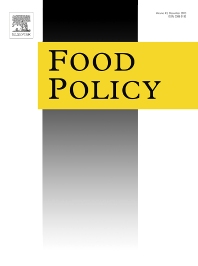One of the most famous papers in development microeconomics is Chris Udry’s 1996 JPE article, in which he finds on average, within the same household and after controlling for a number of possible explanations, women remain less productive on their own plots than men are on their plots. That finding is at odds with economic theory, which dictates that productivity should be equal across all the plots owned by a given household. Here is the abstract of Udry (1996):
Virtually all models of the household assume that the allocation of resources is Pareto efficient. Within many African households, agricultural production occurs on many plots controlled by different members of the household. Pareto efficiency implies that factors should be allocated efficiently across these plots. I find, in contrast, that plots controlled by women are farmed much less intensively than similar plots within the household controlled by men. The estimates imply that about 6 percent of output is lost because of inefficient factor allocation within the household. The paper suggests a new approach to modeling intrahousehold allocation consistent with the empirical results.
Ever since then, the gender gap in African agriculture has generated a great deal of discussion in development research and policy circles. All that has culminated a few weeks ago with the publication of a joint World Bank/ONE Campaign report on the gender gap, which discusses possible policy interventions aimed at eliminating the gender gap:
